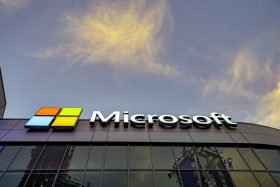IBM Extends 5G Products and Partnerships

At this week’s Mobile World Congress 2021 conference in Barcelona, Spain, IBM (NYSE: IBM) underscored its two-pronged strategy to build on its artificial intelligence (AI) and RedHat hybrid cloud technologies. In the process, Big Blue demonstrated how ecosystem relationships are fueling the buildout of 5G networks.
Specifically, IBM unveiled a new hybrid cloud automation platform for service providers. IBM also announced that Verizon (NYSE: VZ) will deploy Red Hat technology in its 5G core and that Telefonica S.A. (NYSE: TEF) is using a virtual assistant and blockchain-based asset tracking system created in part by IBM. (More details momentarily.)
IBM’s Cloud Pak for Network Automation
Perhaps IBM's most significant announcement in the bunch is the debut of Cloud Pak for Network Automation, an intent-based, closed-loop orchestration platform for telcos that is based on Red Hat Openshift.
The IBM Cloud Pak for Network Automation models the design of a network, including a 5G network, then automatically sets up the service with all the necessary resources — regardless of vendor branding. When combined with another IBM product, the IBM Cloud Pak for Watson AIOps, network operators can set up services that continually analyze network data and automatically adjust to achieve top network performance. The ultimate goal is “lights out” automation of telco networks, IBM says.
The IBM Cloud Pak for Network Automation is based in part on application technologies gained through IBM's recent acquisitions of Turbonomic and Instana. Turbonomic makes application resource management and network performance monitoring software linked in part to Cisco’s Intersight Services; Instana specializes in application performance monitoring.
Notably, the Cisco (Nasdaq: CSCO) factor is a boon, not an impediment, according to both vendors. "IBM and Cisco have a long-standing strategic partnership spanning more than 20 years," said Todd Nightingale, Cisco EVP and GM, Enterprise Networking and Cloud, in a statement. "We look forward to growing and investing in this partnership together…”
IBM Taps Big Verizon Opportunity
IBM’s latest news with Verizon is significant. As revealed earlier this year, that telco’s 5G rollout plan is the most ambitious of the top three U.S.-based carriers. During the U.S. Federal Communications Commission’s C-band spectrum auction last winter, Verizon shelled out $52.9 billion to buy 161 MHz of mid-band spectrum — more than AT&T (NYSE: T) and T-Mobile US (Nasdaq: T-MUS) spent combined. As a result, Verizon plans to add 5G in 46 markets serving 100 million people over the next 12 months.
Verizon has picked IBM’s Red Hat as the basis for a hybrid cloud platform capable of extending service orchestration across its 5G core network. This isn’t the only IBM deployment for Verizon: A year ago, the telco made a pact with IBM to work on AI- and 5G-powered edge solutions. With these agreements under its belt, IBM could profit considerably from Verizon’s plans to spent $10 billion over the next three years on 5G.
Parsing IBM’s Telefonica News
IBM’s latest project with Telefonica was based on previous work on a service named Cloud Garden 2.0 that incorporates IBM Cloud Pak solutions and Red Hat OpenShift to help enterprises move to hybrid cloud environments. Now, IBM has constructed a virtual customer service assistant for Cloud Garden based on a technology called IBM Watson Assistant.
IBM and Telefonica also have created a blockchain-based system to help Telefonica manage its assets and the supply chains associated with them. Telefonica isn’t giving too many specifics but says the solution will be rolled out for internal use in Spain and Germany, with possible adoption elsewhere in Telefonica. Further, IBM and Telefonica may commercialize this system later on.
Both companies also drew on previous work for the blockchain system. Using IBM’s open source, Linux-based Blockchain Platform, Telefonica launched an 8,000-site project early in 2020 to sponsor developers through Spain’s Association of Science and Technology Parks (APTE). Telefonica and IBM also belong to the multivendor, open-source Hyperledger project, which helped Deutsche Telekom release a blockchain-based supply chain system in October 2019.
IBM clearly plans to benefit from its relationship with Telefonica as the carrier rolls out 5G. It’s another wise choice: Telefonica upped its capex spending 35% year-on-year in the first quarter of 2021, following an aggressive 5G rollout schedule.
IBM: Ecosystem Leader
Today’s news from IBM is as much about 5G ecosystem partners as it is about products. When it comes to 5G, multiple suppliers are required to launch services -- radio equipment providers, software suppliers, edge and core network vendors. No one can do it all, but IBM seems determined to be a top dog in the complex delivery structure. It’s a sensible strategy for IBM, which has profited from all kinds of partnerships for generations. And it gives Big Blue the chance to flex its Red Hat and Watson muscles.
At the same time, 5G ecosystems are a relatively new development. As these deals play out in the realities of 5G rollouts, it’s likely we’ll see a few conflicts and disappointments.
For now, though, IBM appears to be playing to its strengths as 5G gains traction among carriers. Expect more news all round.






















